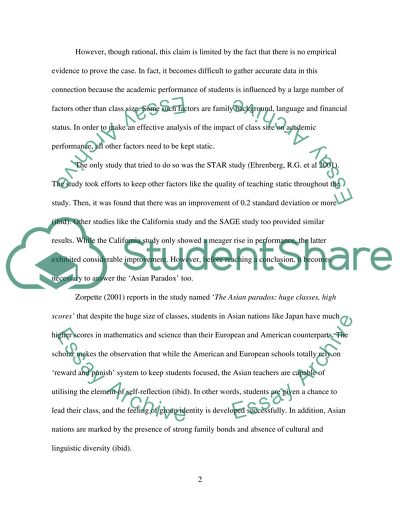Retrieved from https://studentshare.org/education/1591802-read-the-case-studies-to-finish-the-essay-within-title-of-primary-school-pupils-can-achieve-academic-success-only-if-they-are-taught-in-small-class-to-what-extend-do-you-agree-with-this-statmente
https://studentshare.org/education/1591802-read-the-case-studies-to-finish-the-essay-within-title-of-primary-school-pupils-can-achieve-academic-success-only-if-they-are-taught-in-small-class-to-what-extend-do-you-agree-with-this-statmente.


